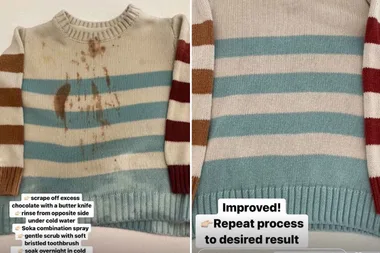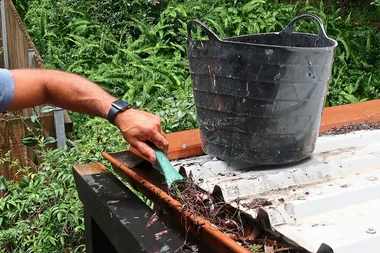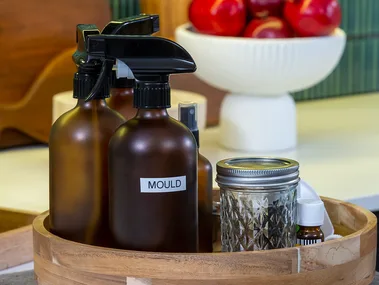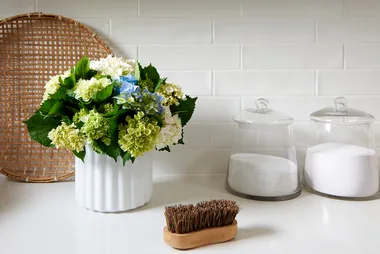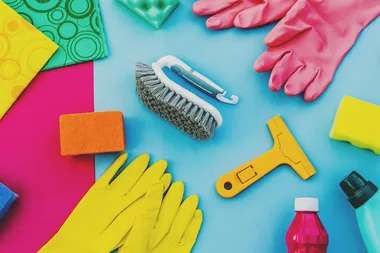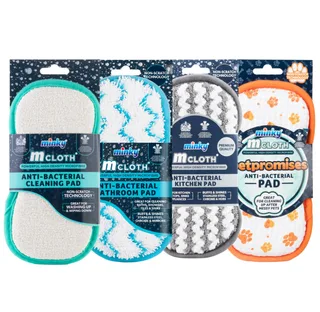Even if you have the best washing machine and dryer set-up, doing your laundry can be a time-consuming chore. And it’s likely to take even more time if you make any laundry mistakes that mean you need to re-wash everything or add extra steps to the process.
In some cases, you might not even realise you’re making a mistake with how you wash your clothes.
But the good news is there are some simple solutions to deal with the most common mistakes.
So, whether you’re finding clothes less-than-clean after washing, smelling unpleasant odours or pulling out damaged fabrics, here’s a look at some of the most common issues and fixes that can have you doing laundry like a pro in no time.
What are the most common laundry mistakes?
1. Using the wrong water temperature
In Australia, washing clothes, towels, and sheets in cold water is the most popular choice. But is one temperature better than the other for cleanliness and garment care?
It turns out that it doesn’t matter. While warm water will give a slightly better result, cold water is better for your clothes. Not to mention washing clothes at a high temperature can cause them to shrink, depending on the fabric.
Read more about the best water temperature for washing your clothes.

2. Putting detergent in the wrong tray
There is a right and wrong way to add detergent to your washing machine, and many of us have likely been doing it wrong. The result? Your clothes are stinkier and scratchier.
As a basic guide, the three trays on your washing machine are for pre-wash, detergent and fabric softener.
Typically, the order goes from left to right, but it depends on the washing machine. So it’s a good idea to check yours and look at the manual (or symbols if you’re not sure where it is) to make sure you’re putting the detergent in the right spot.
3. Adding too much detergent
Ever had towels that feel crunchy after washing or clothes that have gone stiff? There are a couple of laundry mistakes that can cause this, and one of the simplest to fix is by checking how much detergent you use in your laundry.
With most detergents, less is more – just check the container for a guide on how much you need. If you want another way to save on detergent and water use, check out these expert tips from laundry expert and Soka Australia founder Nicole Gibson.
4. Not rinsing towels properly
If your towels are still coming out crunchy no matter how much (or little) detergent you use, there’s another simple way to . According to mums in the Facebook Group Mums Who Clean, a double rinse cycle will ensure all the detergent washes out.
Read more about keeping your towels soft.
5. Ignoring the care label on your clothes
Every item of clothing has washing instructions on the tag, and the same goes for most towels and bedding. But one of the most common laundry mistakes is not reading these labels. While it might seem fine to ignore these tags, you could end up with stretched, shrunk or damaged items – not to mention colour transference and staining.
So always read the care label before washing anything to ensure your clothes stand the test of time. If in doubt, you could consider hand washing your new clothes to see how they are afterwards. This also helps ensure there’s no leftover dye that could stain your other laundry.

6. Waiting too long to treat a stain
The longer you leave a stain on your clothes, the harder it will be to clean. Treat or soak your stain as soon as possible for the best results.
The good news is that most common household stains can be removed with ingredients you already have at home.
Nicole Gibson has created a DIY stain remover spray that contains a mixture of dishwashing liquid and vinegar.
“You’ve got dishwashing liquid, and you’ve got vinegar. Dishwashing liquid is perfect for removing oils, the vinegar component is good for deodorizing and whitening, and it’s also good to remove oil. I think the combination works well,” she says.
According to Nicole, the stain remover spray tackles about 70 to 80 per cent of common stains, and the best part is that it’s cheap.
7. Overfilling your washing machine
If your washing pile is out of hand, cramming as many items in your machine as possible is tempting. The problem with this is that your clothes won’t get cleaned properly. And you’ll have one miserable washing machine.
Avoid piling your clothes too high. Instead, leave a gap between your clothes and the top of the machine so there’s ample room for everything to be cleaned.
8. Not cleaning the lint filter
Laundry mistakes extend to maintenance of your washing machines and dryers, in particular making sure lint is removed from the filter or trap in your machines. It’s tempting to ignore it for as long as possible, but removing lint regularly will help keep your machines working properly. In turn, that means clean laundry.
Lint filters are typically in the door cavity for front-loaders or in the centre for top-loaders. Plus, they only take a few moments to check.
9. Not cleaning your washing machine and dryer
Even though they’re used to clean and dry our clothes, both washers and dryers also need a bit of care every now and then. This can include cleaning the drum by hand, putting on a rinse or cleaning cycle and even removing the drain pump filter depending on your machine.
You’ll find instructions in your manual, so check the details and add it to the chore list to help keep your clothes clean and improve the life of your machines.
10. Putting laundry on without checking zippers, buttons or delicate items
When you have a lot of laundry, a common mistake is to just put on a load without going through what’s there.
But if you have clothes that are unzipped or unbuttoned, there’s a risk they could do damage to other items or even be damaged (particularly for chunky zips). What’s more, if you skip putting delicates into a bag, you could end up with misshapen lingerie or other damage.
So, as much as it adds time to sort through the laundry, doing it before you put your washing on means there’s one less mistake you potentially have to worry about later on.
Cleaning products
You might also like:
- How to whiten and brighten laundry
- Why do my clothes feel crunchy?
- Unlikely spot mould is growing in your washing machine


